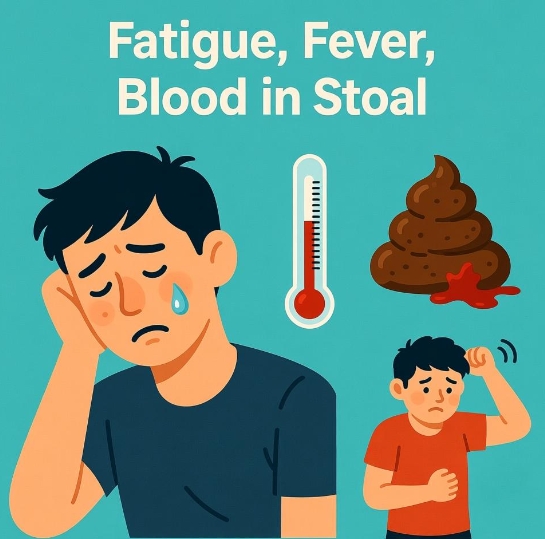Crohn’s disease is a chronic, relapsing inflammatory bowel disease that can involve any segment of the gastrointestinal tract from mouth to anus, but most commonly affects the terminal ileum and adjacent right colon. The clinical picture is highly variable, ranging from subtle, intermittent discomfort to severe, life-threatening complications. Recognizing the key symptoms early can shorten the delay to diagnosis and reduce long-term damage.
- Core intestinal symptoms
- Diarrhea: usually semiliquid, without visible blood in limited ileal disease; overt bloody diarrhea is more common when the colon is involved.
- Abdominal pain: typically crampy or colicky, localized to the right lower quadrant; pain often precedes defecation and may temporarily improve after a bowel movement.
- Weight loss: results from reduced oral intake (food fear), malabsorption, and chronic inflammation-driven hypercatabolism; unintentional loss >5 % within 3–6 months warrants evaluation.
- Fatigue: disproportionate to sleep duration; correlates with anemia, micronutrient deficits, and systemic cytokine release.
- Extraintestinal manifestations
- Joints: peripheral arthritis (knees, ankles, wrists) that parallels bowel activity; axial involvement (sacroiliitis, ankylosing spondylitis) runs independently.
- Skin: erythema nodosum (painful red nodules on shins), pyoderma gangrenosum (rapidly expanding ulcers).
- Eyes: episcleritis (redness without visual loss), uveitis (photophobia, blurred vision—requires urgent ophthalmologic care).
- Mouth: aphthous ulcers recurring every few weeks.
- Hepatobiliary: primary sclerosing cholangitis (fatigue, pruritus, cholestatic liver tests), gallstones due to ileal bile-salt malabsorption.
- Signs of penetrating or stricturing disease
- Perianal tags, fissures, or fistulas: spontaneous drainage of serosanguinous or purulent fluid; may be the first clue in adolescents.
- Palpable abdominal mass: inflamed ileal loop or phlegmon.
- Subacute obstruction: post-prandial bloating, borborygmi, and colicky pain culminating in nausea—suggesting fibrostenotic narrowing.
- Systemic and laboratory clues
- Low-grade fever (37.5–38.5 °C) spikes during flares.
- Normocytic or microcytic anemia, thrombocytosis, elevated CRP/ESR.
- Vitamin B12 or vitamin D deficiency; low serum albumin reflects severe mucosal loss.
- When to suspect Crohn’s in daily practice
Persistent right-sided abdominal discomfort plus diarrhea for >4 weeks, especially in young adults or smokers, should prompt ileocolonoscopy and small-bowel imaging. Conversely, isolated rectal bleeding with constipation is more typical of hemorrhoids or malignancy—age-appropriate cancer screening remains mandatory. - Course and red-flag evolution
Symptoms often wax and wane; however, sudden severe abdominal distension, obstipation, or continuous bleeding signals complications (perforation, abscess, or massive hemorrhage) and mandates emergency assessment.
Summary table
| Organ system | Typical findings | Clues to severity |
|---|---|---|
| Gut | Loose stools, right-sided cramps, oral ulcers | Blood, nocturnal diarrhea, weight loss >10 % |
| Joints | Swelling, morning stiffness <30 min | Limitation of spine motion, hip pain |
| Skin | Tender nodules, enlarging ulcers | Ulcer diameter >2 cm, necrotic center |
| Eyes | Redness, photophobia | Visual blur, hypopyon |
| General | Fatigue, low-grade fever | Temperature >38.5 °C, orthostatic dizziness |

